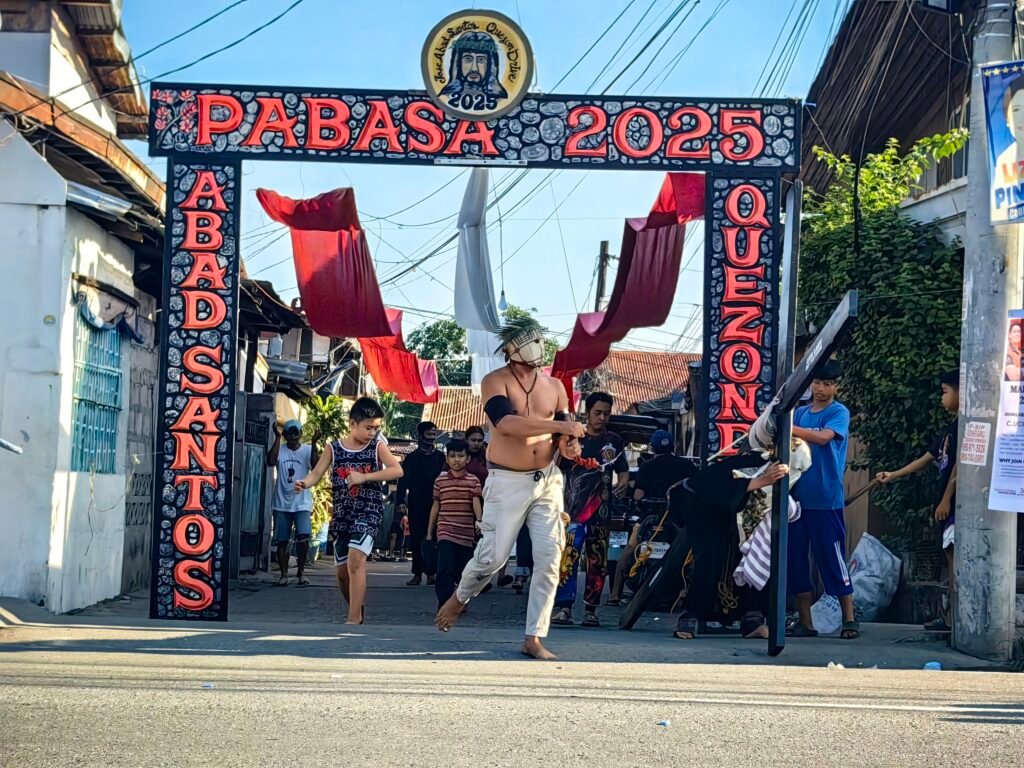Story and photos: Jan Darren Guiwan | KapampanganTraveller
On Maundy Thursday, penitents known as “mandarame” solemnly walk the stretch of Quezon Drive in Barangay Dau, accompanied by the steady chanting of the Pasyon echoing from a nearby puni—a temporary roadside chapel built for Holy Week.
Despite continuous discouragement from religious leaders and other denominations, this Kapampangan practice of self-flagellation and public penance remains alive, a powerful if controversial expression of devotion that persists across generations.
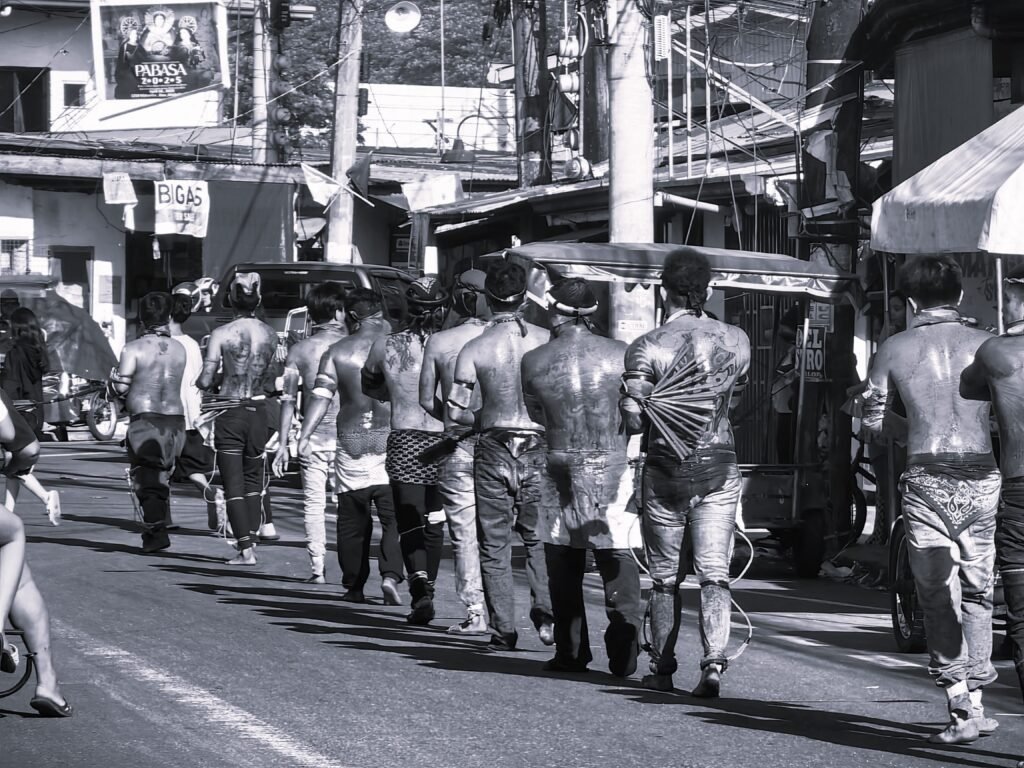
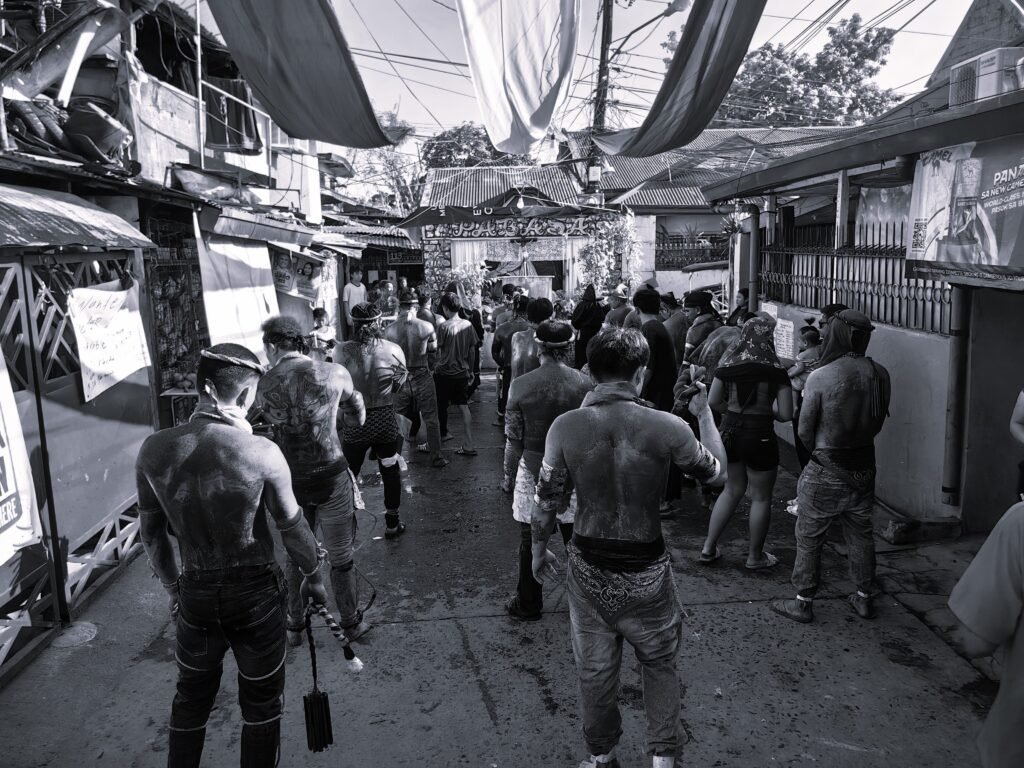
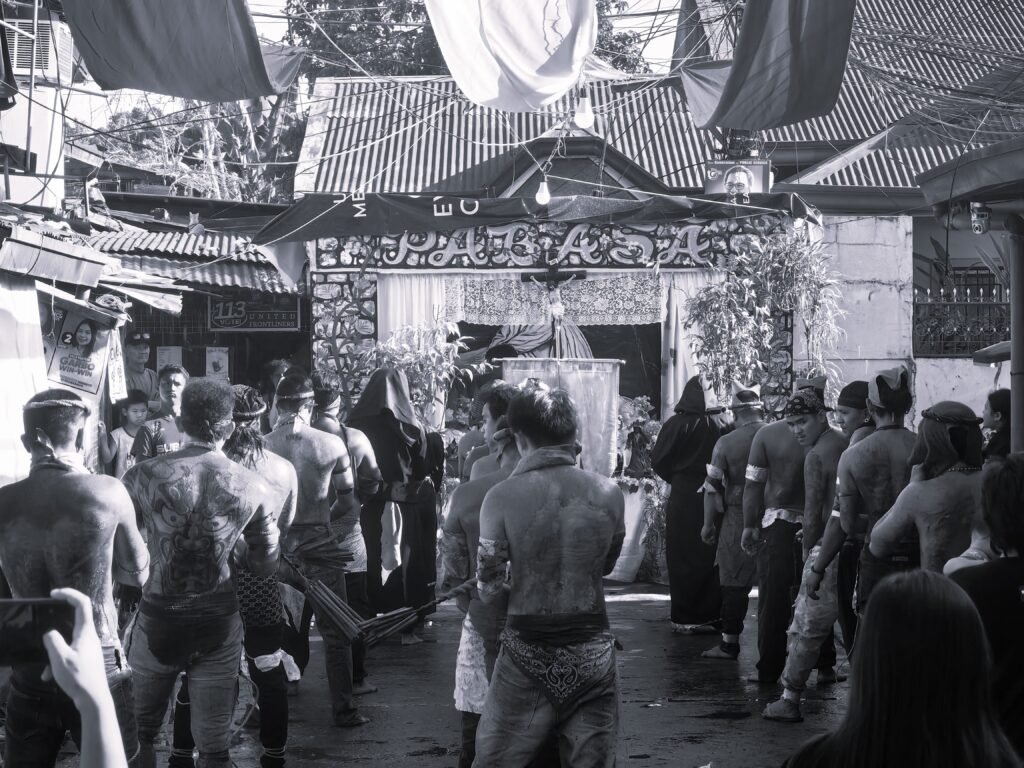
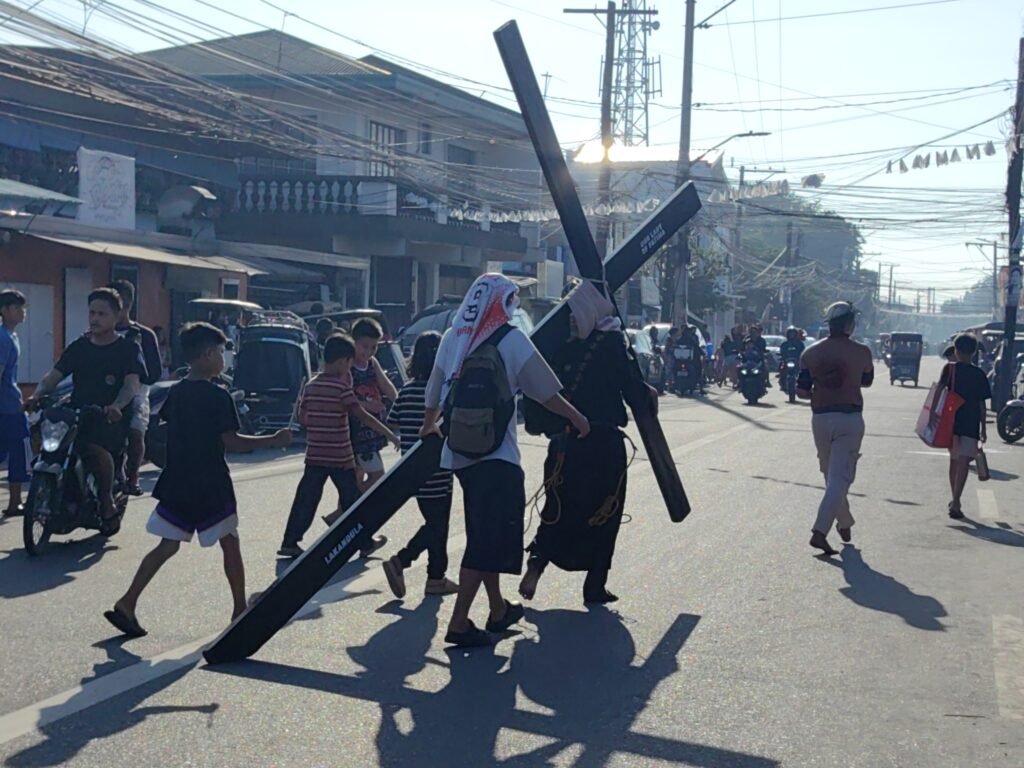
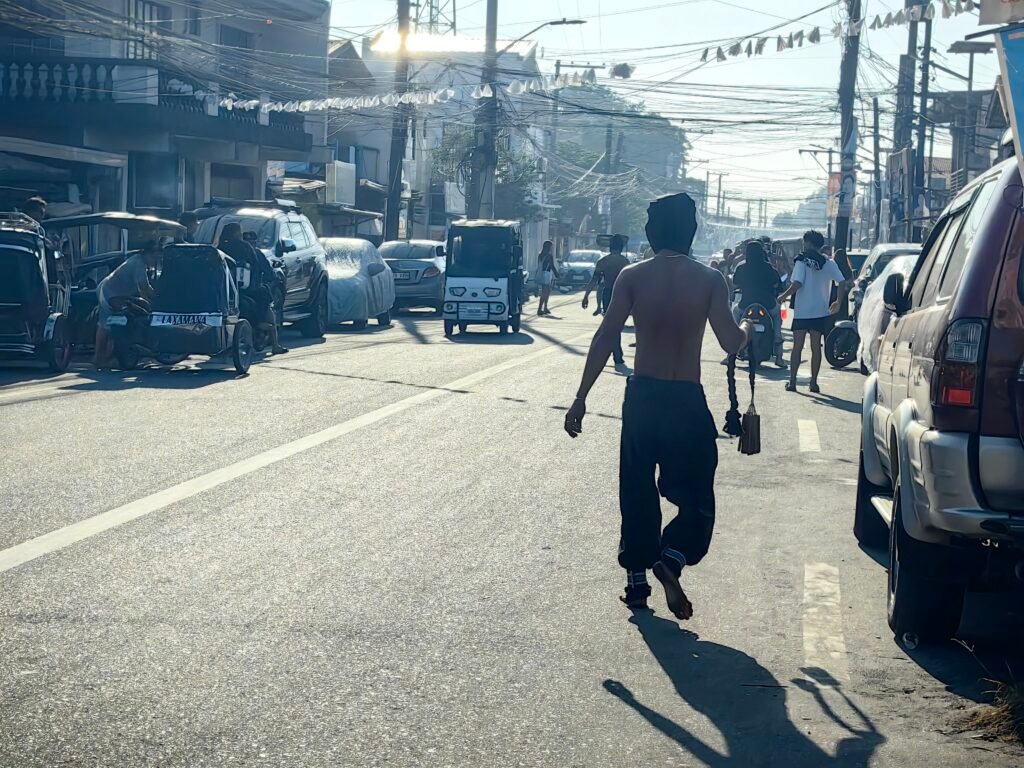
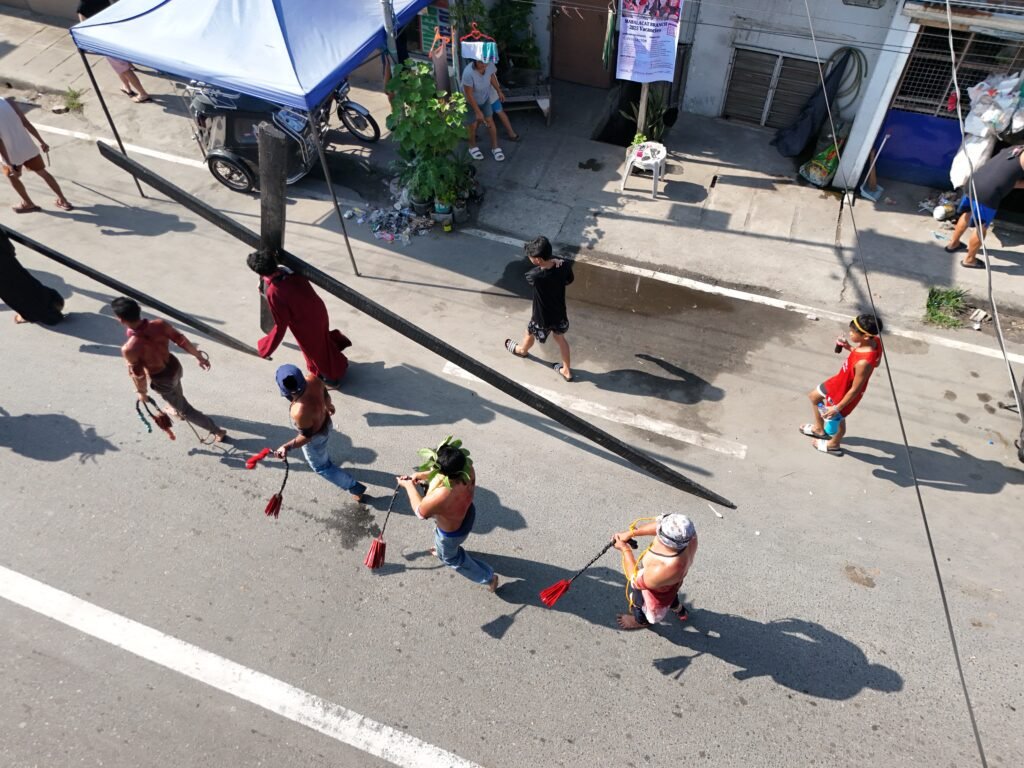
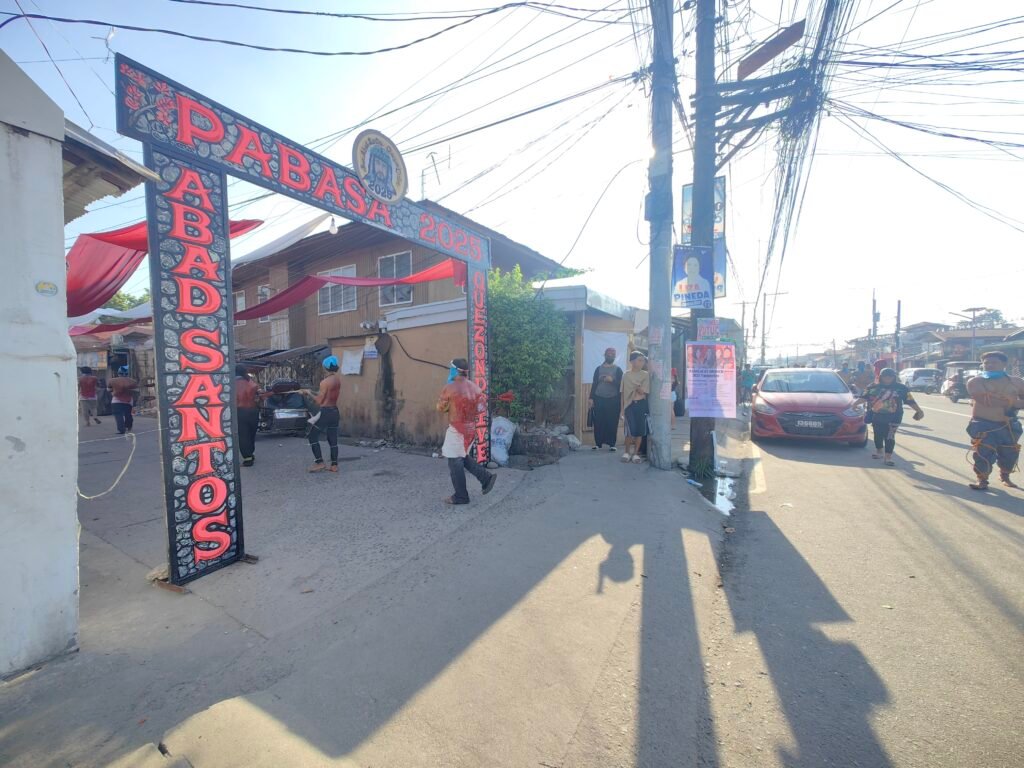
Having grown up in this part of Mabalacat, I’ve seen how this tradition transforms our streets every Holy Week. As early as Holy Monday, small groups of penitents begin appearing—barefoot, masked, their backs bloodied with the sting of discipline. Though some may view the practice with discomfort or even fear, for many in Pampanga, it is a deeply personal act of faith, sacrifice, and cultural identity.
Devotion in Motion
There’s no denying the emotional impact of seeing mandarames for the first time. As a child, I feared them. I dreaded Maundy Thursday—not because of the Visita Iglesia, but because encountering masked penitents bearing wooden crosses or whipping themselves was inevitable. Yet for many children in our neighborhood, this sight was normal, even inspiring. I remember a friend from the 1990s declaring, “Paglaki ko, magpupusan din ako ng krus tulad nila.” (“When I grow up, I will carry the cross like them.”)
This sentiment likely echoes across many towns in Pampanga, where devotion is inherited, sometimes even expected. I’ve heard of fathers passing down the panata to their sons—a pledge to continue the annual penance.
Communal Spirit and Ritual Preparation
The community plays a significant role in supporting this tradition. In the weeks leading to Holy Week, locals prepare for their own participation or to aid the rituals. Stored wooden crosses are repainted and repaired. Groups plan their routes. And in homes across the city, conversations shift toward preparations for pamagdarame.
In Mabalacat, punis become spiritual checkpoints. They are built and decorated by neighbors who share costs and responsibilities. Even in Protestant households like ours, contributions are gladly given, “for the community,” as my aunt would say. These spaces come alive with color, sound, and movement—banderitas fluttering above, speakers playing the Pasyon, and the quiet shuffle of penitents stopping to pray.
Food is also part of the observance. On Holy Tuesday, a neighbor requested a share for the tutok—a pooled fund used to prepare meals for Pasyon chanters and mandarame supporters. Snacks like lelut manuk, sampelot, Pinoy spaghetti, and pancit are distributed, especially to children who gather near the puni. I remember joining these lines myself—as long as there were no penitents nearby to trigger my anxiety.
Ritual, Identity, and Resistance
Though most penitents are male, some women participate too, sparking debate over the evolving nature of the tradition. In some areas, pamagdarame is seen as a rite of passage. I recall overhearing in Macabebe, “E ya tune lalaki istung e ya migmandarame.” (“He isn’t a real man if he hasn’t done penance.”) While this idea needs more research, it hints at how the ritual becomes intertwined with local notions of masculinity and honor.
Still, pamagdarame goes beyond sin and suffering. It is not just atonement, but identification with Christ’s passion. In Pampanga, the term itself—pamagdarame—translates to “to sympathize.” Penitents do not merely mimic Christ’s suffering; they walk with Him, feel His pain, and show solidarity with His sacrifice. Archival images from the 1940s even show penitents following the karo of the Sto. Entierro, reinforcing this spiritual link.
A Tradition Unshaken
Yes, these practices may cause fear in children or inconvenience on roads. They may be condemned by some, photographed by others, or revered by the devout. But above all, they remain deeply rooted in Kapampangan culture and identity—a living tradition shaped by community, faith, and personal resolve.
And despite growing criticism, the mandarame will continue to walk our streets in the years to come—bloody, barefoot, but unwavering in their belief.

